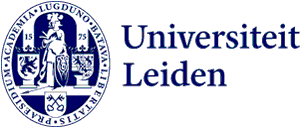
Supercomputer ALICE is even more powerful, and that is good news for many disciplines
Supercomputer ALICE has been expanded, making it even more powerful and faster. This means researchers and students can work with heavier models. From language research to brain activity scans, this expansion is good news for a variety of disciplines. So who gets to work with this prima donna?
A growing number of researchers need a more powerful supercomputer for their research, say Robert Schulz and Jan Just Keijser from the ICT Shared Service Centre. Some researchers, for example, who conduct research with machine learning: a method that teaches computers to independently learn from data and make decisions. Other researchers work on data mining: uncovering patterns and links in large data sets. That is why ALICE, the data centre's prima donna, has been expanded with more capacity, see box.

Users from different faculties
To be clear: ALICE is not a single computer, but the largest compute cluster of Leiden University, launched in 2019. Its name stands for Academic Leiden Interdisciplinary Computing Environment. Most of its users come from the Faculty of Science and LUMC, but ALICE is also attracting a growing number of researchers from the faculties of Social and Behavioural Sciences, Humanities, and Archaeology, as well as the Leiden University Libraries. In 2019, ALICE had more than 100 users, a figure that has since increased to nearly 250, of whom more than 30% are students.
With a powerful compute cluster like ALICE, it is all about the capacity of the nodes: the interconnected servers. This capacity is expressed in the number of Central Processing Units (CPUs) and the number of Graphic Processing Units (GPUs). The latter ensure that videos and photographs can quickly be displayed in 2D or 3D. In 2023, ALICE was extended with an additional 14 nodes, bringing it up to a total of 28 powerful GPUs, with seven times more memory capacity and three times more computing power. ALICE now consists of a total of 48 computational nodes.
Many different advantages
Thanks to the increase in ALICE's capacity, more researchers can now use the system simultaneously. That is why the ISSC is also investing in accessibility. Since 2023, workshops have been organised every month for new and advanced users. ALICE is also increasingly used in teaching. Another advantage is that the new servers are more sustainable: they perform better while using approximately the same amount of energy as the older nodes. Four researchers from various disciplines share how they use the compute cluster.
'My research is only possible thanks to ALICE’'
CT scans with a lower radiation dose
For PhD candidate Jiayang Shi, ALICE's expansion was crucial. ‘My research is about improving the quality of CT scans using deep learning techniques. We try to lower the radiation dose for patients while maintaining image quality. Deep learning helps us improve image quality that is lost with a lower dose: we eliminate static and reconstruct images from CT scans. These tasks require a super powerful computer: imagine working with 625 million digits for a single image! That is why the new nodes, with so much more memory and computing power, are essential. They make my research possible, and the tasks I just mentioned much faster.’

Performing calculations with language models
Linguist Matthijs Wester studies the role of implicit questions in communication. ‘I use deep learning language models to generate and categorise plausible questions. Thanks to ALICE, I can quickly train models and apply them to large data sets. On a standard work computer, the language models of five years ago already cause problems, not to mention the newest and largest models. Thanks to ALICE, students can already conduct serious computational linguistics research for their bachelor's thesis. It would be wonderful if this extension also meant that we can work with what is known as Large Language Models – which underlie software like ChatGPT. Especially now that the Netherlands is planning to build its own GPT-NL.’
'ALICE helps students to produce their first scientific publication’
Scans of brain activity
Neuropsychologist Julie Hall studies the brain activity of test subjects during various cognitive and emotional activities. ‘To do that, I make a functional MRI scan of their brain. This produces 3D images that show which areas of the brain are activated. But first, we have to adequately process the fMRI data, correct it for things like movement, and smooth out the images. This requires specialised programmes and algorithms that are capable of performing heavy calculations. In some cases, this can be done on a laptop, but it is made infinitely easier by ALICE, which can carry out multiple tasks simultaneously.’
Students publish thanks to ALICE
Assistant Professor Thomas Moerland from the Leiden Institute of Advanced Computer Science has his students work with ALICE. ‘I teach the Master's course in Advanced Deep Reinforcement Learning, in which students are asked to conduct their own research, in preparation for their master's thesis and a potential future as a PhD candidate. They are asked, for example, to replicate experiments from a well-known paper that require a lot of computational time. The students use ALICE for this, because their own laptops are usually not powerful enough. If it works, they expand their chosen paper with ideas of their own. As a result, thanks to ALICE, some students produce their first scientific publication.’
Text: Linda van Putten
Photograph above article: Taylor Vick/Unsplash
